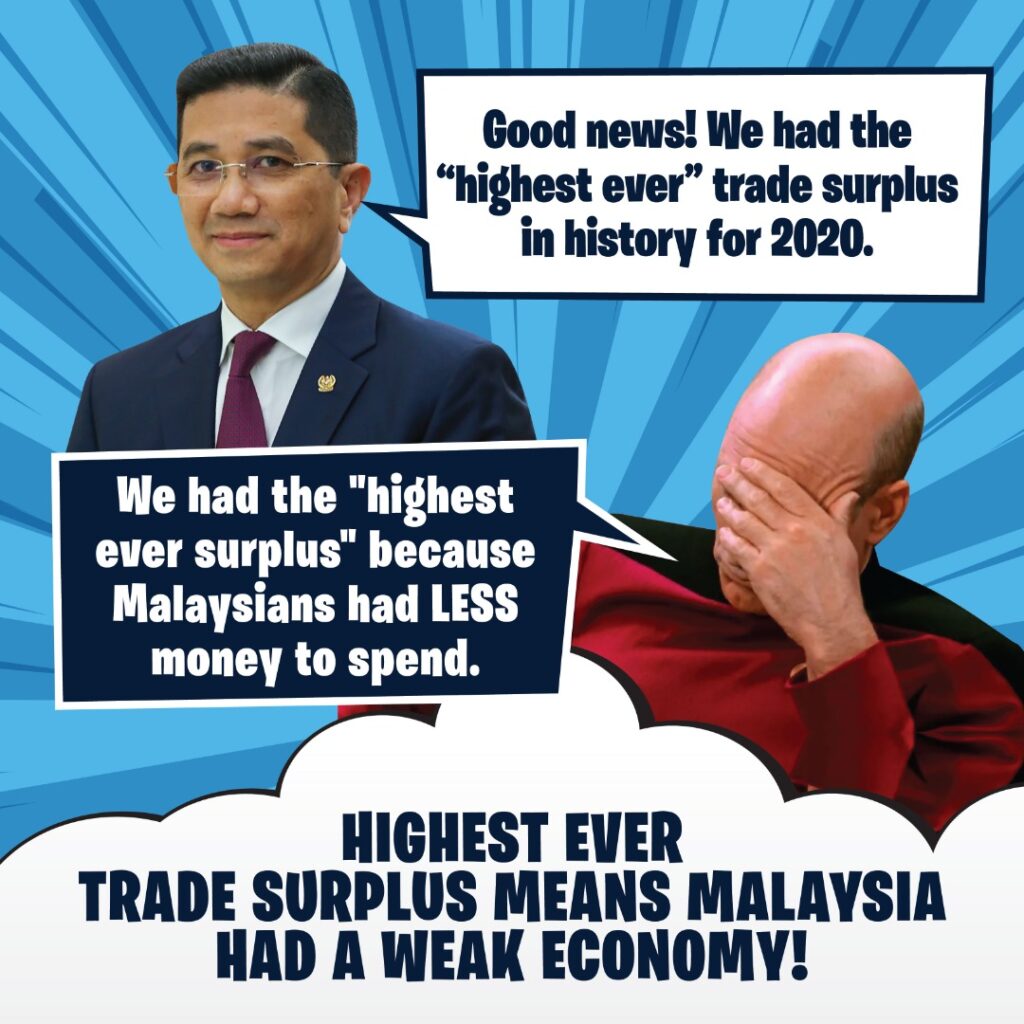
There has been some recent media coverage on Malaysia achieving its “highest ever” trade surplus in history in 2020.[1] This was one of the highlights of the media statement by MITI Minister, Azmin Ali, on the 30th of January, 2021.[2]
In reality, this “achievement” is nothing to be proud of. In fact, it points to a very weak domestic economy, which is likely to remain lacklustre in 2021. Hence, there is no need to be over-optimistic about ever high trade surpluses including in 2021.

Malaysia’s overall trade (exports + imports) decreased by RM67.3 billion or 3.6% from RM1.845 trillion in 2019 to RM1.777 trillion in 2020. Malaysia’s total exports in 2020 decreased by 1.4% or RM14.1 billion compared to 2019.
The main reason why Malaysia was able to increase its trade surplus by 26.9% from RM145.7 billion in 2019 to RM184.8 in 2020 is because total imports experienced a large decrease of 6.3% or RM53.2 billion from RM849 billion in 2019 to RM 796.2 billion in 2020. (See Table 1 below)
Table 1: Summary of Malaysia’s Trade Performance in 2020 and 2019
| 2019 | 2020 | # Change | % Change | |
| Exports | 995.1 | 981.0 | -14.1 | -1.4% |
| Imports | 849.4 | 796.2 | -53.2 | -6.3% |
| Total Trade | 1844.5 | 1777.2 | -67.3 | -3.6% |
| Trade Balance | 145.7 | 184.8 | 39.1 | 26.9% |
Source: External Trade Figures, Department of Statistics Malaysia (DOSM)
It was encouraging that Malaysia’s total exports managed to weather the COVID-19 economic uncertainties in 2020. But it would be wrong to ‘boast’ about Malaysia’s highest ever trade surplus that was caused by a large fall in our imports. Lower imports means that the domestic economic demand was very weak in 2020.
This means less purchases at the local shopping malls of both imported and locally produced goods which has a negative impact on our retailers. Lower demand for imports is also a leading indicator of weak local economic conditions in the near future.
For example, lower imports of machinery and construction materials such as iron and steel means that the construction industry is likely to remain weak in 2021.

While trade under the Pakatan Harapan (PH) government did shrink by 2.5% in 2019, this was not accompanied by negative GDP growth. In fact, the GDP grew by 4.3% under PH in 2019 while it is expected to contract by at least 4% in 2020 under the Perikatan Nasional (PN) government.
With the ongoing MCO 2.0, local demand in Q1 2020 will continue to remain weak. So don’t be too happy when you see MITI announcing another “highest ever” trade surplus in the next few months.
We are in for a challenging 2021 despite the optimistic GDP growth projection by the Ministry of Finance of between 6.5% to 7.5% for the year.
Dr. Ong Kian Ming,
MP for Bangi



